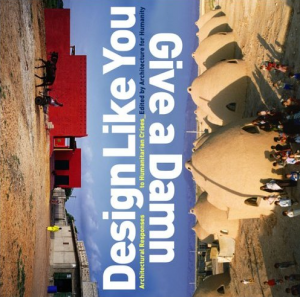 Design from a Distance
Design from a Distance
I spent part of the morning last Friday with the team at
Architecture For Humanity (and a South African
Design Fellow on the ground), brainstorming potential design solutions for
FIFA's Football For Hope program. As it turns out, FIFA has decided that the World Cup 2010 will be like no other: rather than just a sporting event, FIFA aims to use the Hope program to "bring together, support, advise and strengthen sustainable social and human development programmes" in areas affected by the tournament. FIFA's plan? To build 20 community centers and football pitches throughout Africa, part of its "2o Centres in 2010" program, and a concerted attempt to leave a legacy beyond the World Cup 2010.
To me this sounds like a great plan but, were it not for the involvement of Architecture For Humanity, whose team brings an amazing breadth and depth of community design knowledge, I would mostly write it off as a CSR/greenwashing play. I mean, let's be honest, do 20 towns in Africa actually need community centers?
As it turns out, the answer is yes - mostly because FIFA and its stakeholders and sponsors have decreed it thus. So...if we
have to build 20 community centers, how do we make sure that they are built in accordance with user wants and needs? And how to do it separated by 6000 miles and a crappy Skype line?
From an experience design perspective, the architecture and urban development space is an interesting animal, dominated - at least as far as I can tell - by a long list of constraints: dozens of stakeholders (expert and not), local political schisms, material limitations (brick, wood, adobe, stone, metal...which to choose and where to source it?), local construction capacity, etc... The list goes on and on and on, and kudos to the Architecture For Humanity team for sticking with it.
The feedback loop
There is something to be said for a situation in which authentic, relevant feedback from the end user - in this case, local African villagers - is absent from the picture. It's normal for designers to ideate and brainstorm potential solutions, then test them against the list of user wants and needs to see what sticks (and with the Architecture For Humanity team, there's always plenty of great sketching and brainstorming going on). But in this case, the sketches were being (mostly) tested against the requirements of major fiscal stakeholders and sponsors, not the actual end users.
When you are Microsoft, and your end users can express their displeasure by no longer buying Microsoft products, the feedback loop can be a powerful tool for change. But when you are a big sponsor and/or development organization, and your end users have no way of providing positive or negative feedback, or they don't even know that
they have a voice, the system breaks down and the design process fails.
So while I admire the folks at Architecture For Humanity for their tenacity and creativity under pressure, I don't envy them at all. Are there any potential solutions to this impasse?